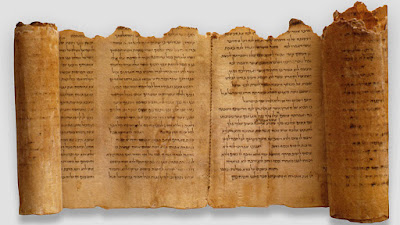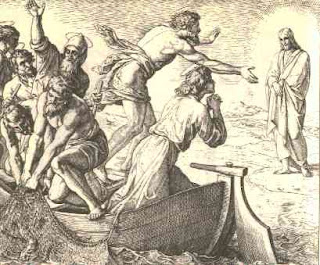The Dead Sea Scrolls - Session Four
Prayer and Worship in the Dead Sea Scrolls
The discovery
of so many prayers and liturgies at Qumran is significant. It fills in a huge gap in our understanding
of prayer in Second Temple Judaism. Eileen
Schuller has noted:
“One thing that is distinctive is that the
community of Qumran put their prayers into written from. This was in marked contrast
to the practice of subsequent centuries in rabbinic Judaism which discouraged
the setting down of prayer in writing (t. Shabb. 13.4). One of the difficulties in studying Jewish
prayer (particularly as it developed after the destruction of the Temple in AD
70) is that although there are scattered reference, and occasionally even the
actual words of blessings in the Mishnah and in the Talmuds, prayer was
basically oral. As mentioned earlier, the earliest preserved copies of the
Siddur [the Jewish Prayer Book] are dated only to the ninth century [AD/CE]. The
scrolls fill in a stage in the development of Jewish prayer-forms that
previously had been without written texts.” Eileen Sculler, The Dead Sea
Scrolls: What Have We Learned 50 Years On?, 59.
This week
we are looking at a variety of liturgical and prayer-related texts that come
from the life of the community. In particular,
we will look in close detail at the Songs of the Sabbath Sacrifice (Vermes 329-39). I will also be sharing another article by Dr.
Schuller that briefly describes the liturgical material and prayers discovered
in the Qumran caves.
Liturgical
Prayers (Vermes,
Section C)
There are a
variety of fragmentary prayer texts that give us a sense of the kind of prayers
the community prayed, and perhaps even the contexts in which they were prayed. Browsing
through these texts give us a sense of the liturgical and spiritual life of the
community. I would suggest that you skim through some of these prayers in this
section as you might skim through pages of the Book of Common Prayer during a
boring sermon. “Flipping through the
Prayer Book”, taking a 30,000 foot view, gives us an opportunity to get a broad
sense of what was going on. Look at a
couple of prayers in detail, to get a sense of the content, but pay careful
attending to the form, and see if you can tease out the function from the form.
In the course outline I have suggested looking at particular texts, but feel
free to skim through any of the texts in section C of Vermes (Calendars,
Liturgies, and Prayers, pp 347-399).
Fragments of 4QBerakhot (Blessings)
Songs
of the Sabbath Sacrifices (Vermes 329-339)
The other
important question that we will be examining, is “what did the community think
was happening” when they prayed, especially when they gathered. The Songs of the Sabbath Sacrifices provides
some interesting insights in this respect. There is a sense that somehow earthly
worship is joined to celestial worship.
Sometimes this text has been called “The Angelic Liturgy.” The Book of
Ezekiel heavily influences this text. It may be helpful to review Ezekiel chapters
1, 10 & 40-48. As Vermes ( 329)
points out, a couple of terms from ancient and medieval Jewish mysticism (Merkabah
– “the divine throne-chariot” & Hekhaloth – “heavenly palaces”) may offer some descriptive
help in understanding what is happening in these texts. An important question for consideration is to
what degree are these texts actual liturgies in which the community participated,
or idealized, imaginative celestial liturgies? Please read these texts
carefully and in detail.

Songs of the Sabbath Sacrifice
The Temple Scroll (Vermes 191-220)
Another important text is the Temple Scroll. Opinion is divided as to whether
the Temple Scroll is a sectarian or non-sectarian text. Hartmut Stegemann proposed
that it was kind of a “Sixth Book of the Torah”. Others see it as a text unique to the community. Don’t spend a lot of time on this text. Just dip
in and read the occasional paragraph. It
deals with the building and contents/furniture of the Temple, as well worship,
sacrifice, and feasts. Again, the
question before us is, is this an actual description of the Temple, or is it
idealized, or even metaphorical?
Calendars (also in Vermes,
section C)
We will not spend any time looking at the calendrical texts, although
they are important for helping us to understand the pattern and cycle of
community worship. These are quite
complicated and esoteric text. What is significant
is that they reveal that the sectarian community used a solar calendar as
opposed to the lunar calendar that was at use in Jerusalem. We have discussed this before in relation to the
legitimacy/illegitimacy of festivals being kept according to either calendar
and in relation to the Pesher texts and the attack made on the Teacher of
Righteousness on the Day of Atonement.




Comments